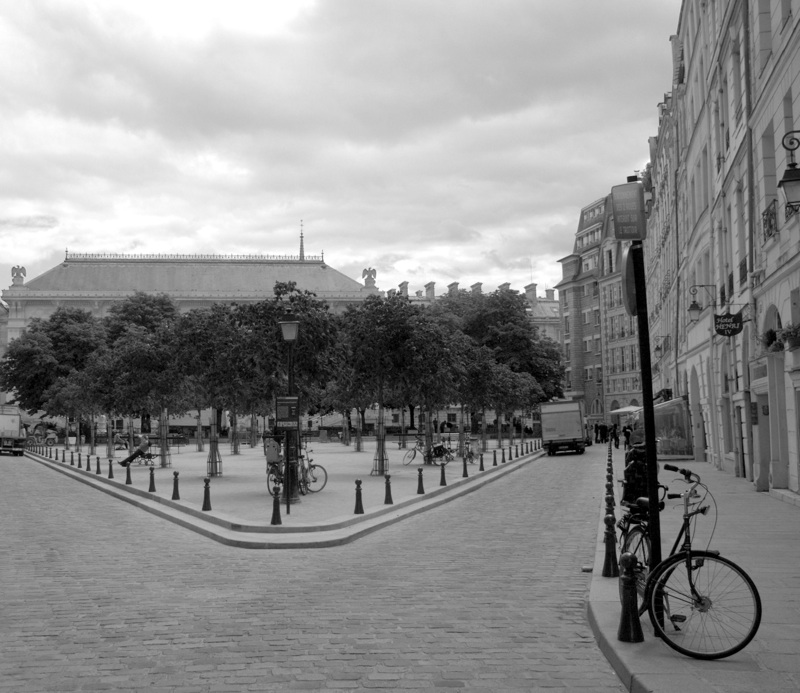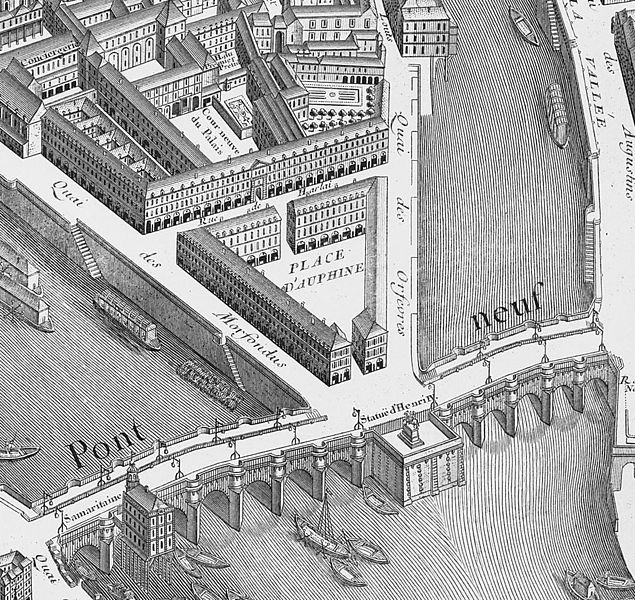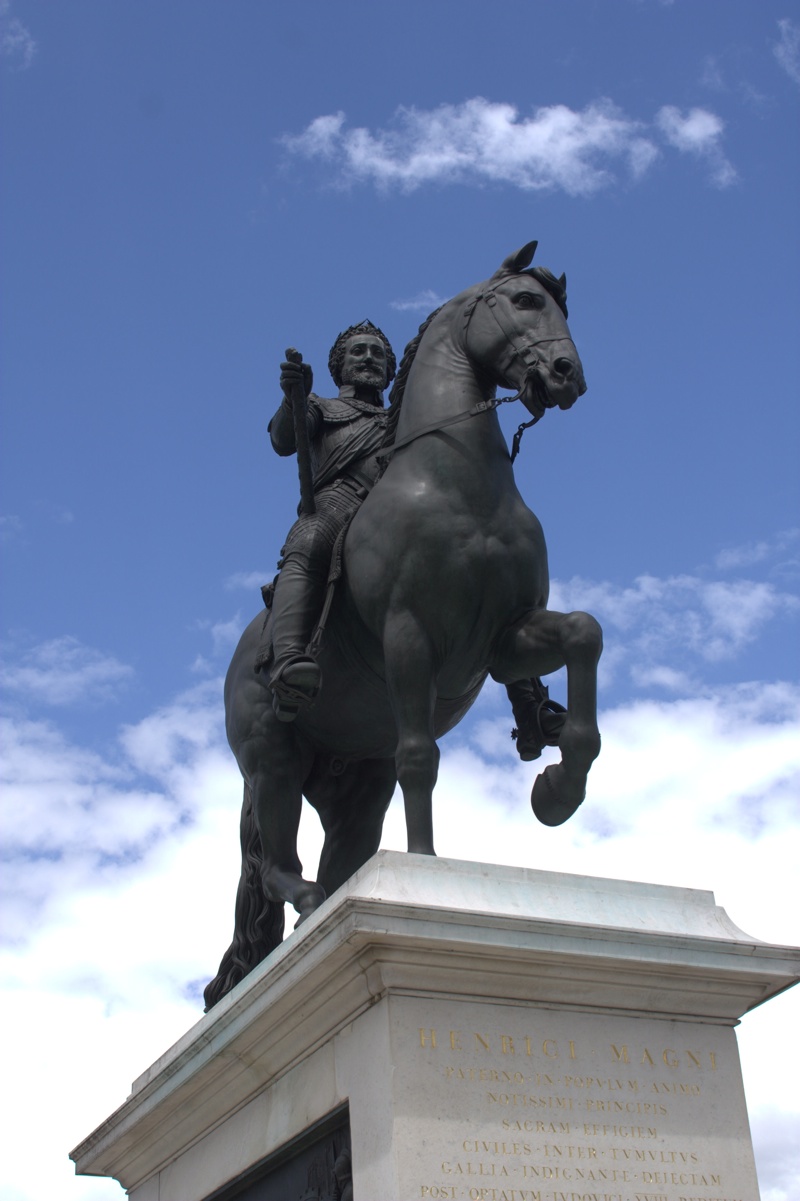France (Wikipedia)
Lister did not mention Place Dauphine in his pocketbook or memoirs, but his traveling companion Philip Skippon noted:
Place Dauphine is a triangular piazza, built very uniform, and just in sight of Hen. IVth’s statue; Rue de Harlay is behind that pizza, where are the houses are of the same building.
The statue of Henri IV is on the Pont Neuf, and it was commissioned by his widow, Marie de Médicis. Designed by Giambologna, the statue was erected on its pedestal in 1618. The original was destroyed in the French Revolution, but a new bronze statue was rebuilt in 1818 to commemorate the restoration of the Bourbon Monarchy. As Thomson stated
The history of urbanism in Paris conventionally begins with the initiatives of Henri IV during the first decade of the seventeenth century, the building of the place des Vosges begun in 1605, the completion of the Pont Neuf with the triangular place Dauphine at its middle on the western end of the Ile de la Cité and the opening of the rue Dauphine from the south of the bridge, as well as the projected semicircular place de France with its radiating streets in the north-east of the city planned in 1610 but abandoned with the assassination of the King in that year. 1
Gallery
Back to top
- David Thomson, Renaissance Paris: Architecture and Growth 1475-1600 (Berkeley: University of California Press, 1985); Jean-Pierre Babelon, ‘L’Urbanisme d’Henri IV et de Sully à Paris’, in L’Urbanisme de Paris et l’Europe 1600-1800 (Essays in honour of Pierre Francastel) (Paris, 1969). ↩



